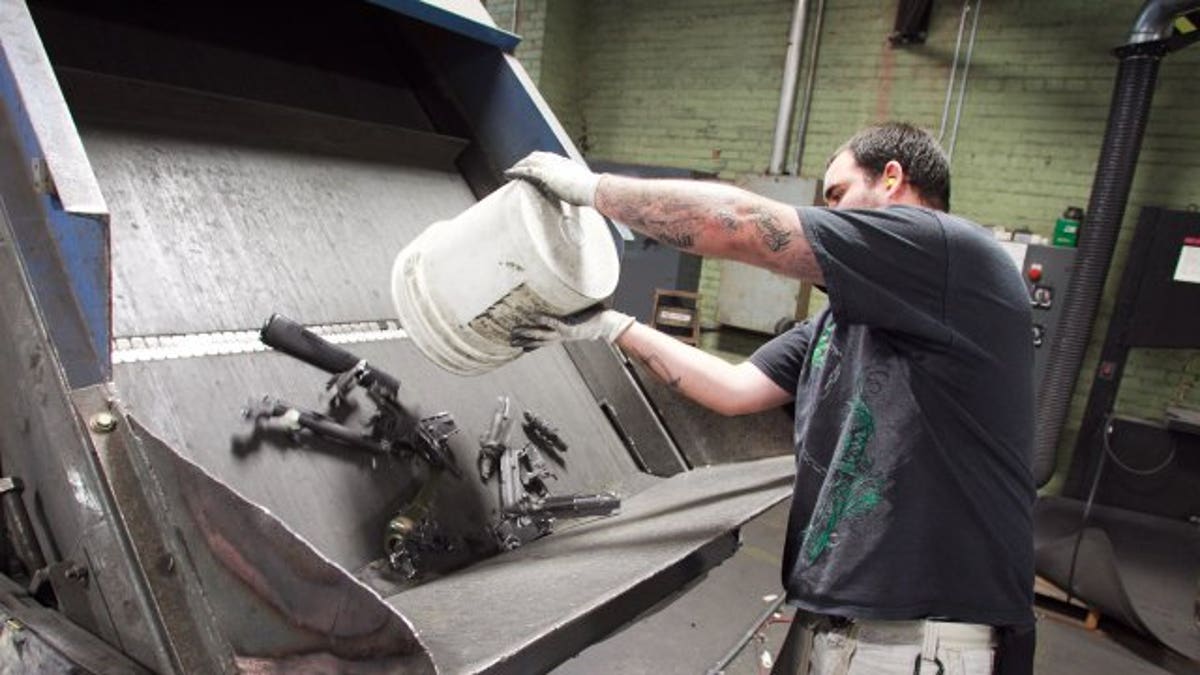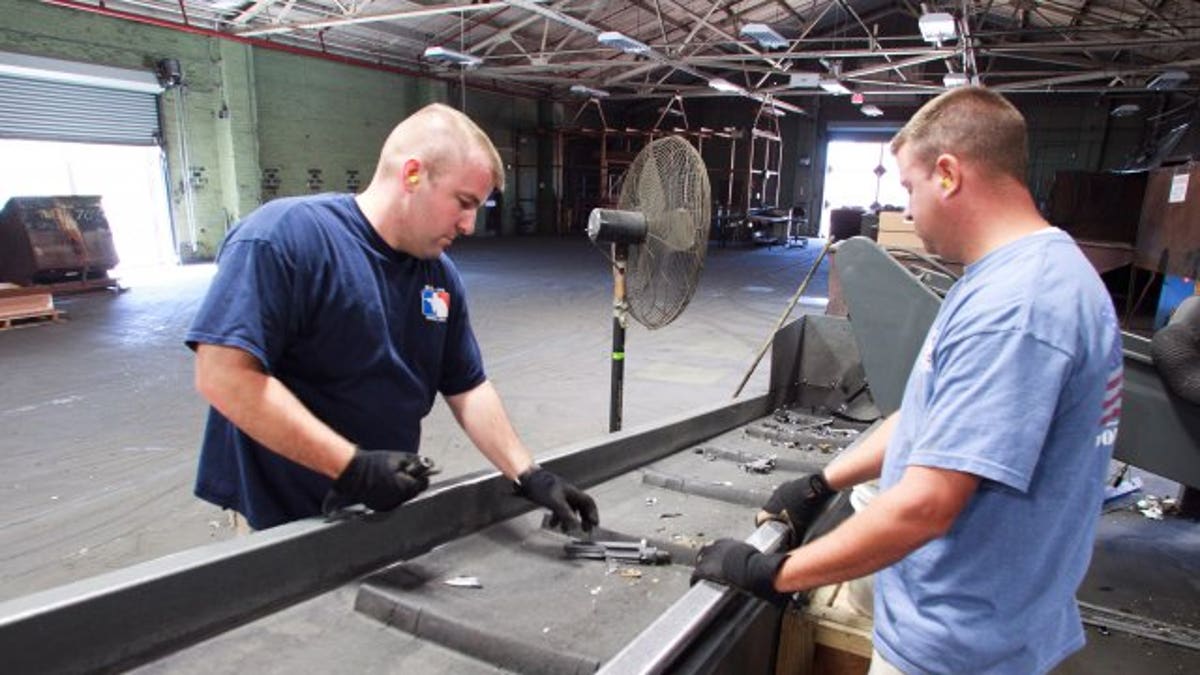
An operator pours weapons onto Captain Crunch's intake belt. (Army.mil)
It’s the place where military weapons go to die.
Once a weapon is marked for destruction, it is sent to Anniston Army Depot where it will more than likely spend its final moments being chomped apart by the military’s Grim Reaper for guns: "Captain Crunch."
The massive metal shredder has been in operation since the early 1990s and has used a pair of intertwined blades to chop up more than a million weapons during that time.
“There were days when approximately 2,500 weapons, mostly rifles that were deemed unserviceable, were shredded using Captain Crunch,” said Susan Lowe, a public affairs specialist for the Defense Logistics Agency, the overarching government organization that oversees the demilitarization work done at Anniston. “Approximately 500-600 pistols that were deemed unserviceable can be demilitarized in a day using Captain Crunch.”

Operators examine destroyed weapons fragments after the pieces exit Captain Crunch's shredder. (Army.mil)
Lowe said in an email to FoxNews.com that any small arm or light weapon in the military arsenal marked for destruction has probably passed through Anniston, which is the only small arms demilitarization center in the United States. Despite the huge number of weapons that flow into the facility, Lowe said Captain Crunch can be operated “with a minimum of two people.”
The Army Depot sits on a 25-square-mile tract of land about 10 miles outside Anniston, Ala. and about 60 miles east of Birmingham. The facility does more that destroy; it also repairs all manner of combat vehicles. But inside the Nichols Industrial Complex sits Captain Crunch.
No one seems to know who first coined the catchy moniker; however, it’s not difficult to imagine why it was devised. Completely intact weapons are loaded on a conveyor belt at the front of the machine, and by the time Captain Crunch spits them back out, they’ve been deconstructed into small, jagged metal scraps.
“We have one guy that throws ‘em in, feeds the Crunch,” said one operator, Jason Nail, during an interview for the History Channel series “Boneyard” in 2007. “At least two, if not three, other guys on the line make sure nothing don’t go where it’s not supposed to go. All the little pieces that come off – triggers, sights, bolts, etcetera – get thrown into the box. We take the box at the end, when we’re done using Captain Crunch, bring it to the torch cutting stations and light ‘em up.”
Rifles, though larger, are easier to destroy. Small weapons take more time because of the smaller parts and pieces that each must be sufficiently demolished.
Two types of weapons are sent to the shredder: those deemed “unserviceable” and those that are “obsolete.” The determinations are made by the individual military services that used the weapons.
Some items marked as “obsolete” are refurbished and sold to collectors through the Civilian Marksmanship Program in Anniston. Even some of the Captain Crunch operators, many of whom are gun enthusiasts in addition to gun destroyers, get a kick out of seeing some of the older weapons.
“It’s like Christmas,” property disposal specialist Jerrod Kirkpatrick said in a 2011 article for the Army’s website. “You open up a box and say, ‘I’ve never seen this before. What is this?’”

